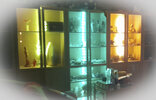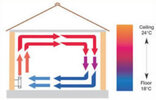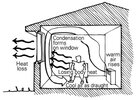LED light bulbs have more flexibility to what tungsten ever did, being able to reduce light output and of course power used, without any change in colour temperature, or to change colour temperature without reducing output, and to change colour without needing to paint the glass.
To have lit a display cabinet like this

with tungsten light, with first two cabinets changing colour would have been very hard with tungsten.
The demise of the pearl coating on the tungsten bulb means they had a very harsh light, and replacing the envelope with quartz resulted in not being able to dim the bulbs, without reducing life, and the intimate use of the CFL resulted in the removal of dimming switches, and the traditional UK wiring may be good for emergency lighting and fans, and reduces the loop impedance, but does not lend itself to the use of electronic switches, be it simple on/off or dimming. We see charts published by the electronic switch manufacturers as to what bulbs will work with their switch, so often we need to use more expensive bulbs to use with electronic switches, which cost nearly as much as the smart bulb.
The whole way of lighting the home has changed, the 100 watt tungsten light bulb gave out a lot of light, in nearly all directions, the LED base means it has a dead zone, and to find a LED bulb with 1000 lumen output may be in theory a 15 watt LED but in practice they don't throw the light out as far, so we need more light fittings, and smaller bulbs, to get the same spread of light. My old house had two 100 watt tungsten bulbs when bought in the living room, it now has 10 x 5 watt LED, and seems no brighter, so LED is about 4 times the output of tungsten in real terms, but the charts try to say it is around 10 times the output, we buy a 5 foot replacement for a fluorescent tube, and it seems such a saving, 22 watt instead of 58 watt, but also output is 2000 lumen compared with 5000 lumen, that is some reduction in light output.
It is likely the 4 times is because each bulb is so close to another in a group of 5, and if the lighting was rearranged with 4 points instead of 2 points, LED would work out better, but 16 x GU10 down lights to replace one 5 foot fluorescent is going too far, 16 x 5 = 80 watt v 58 watt, how is that better?
So the display cabinet shown is used to supplement the lighting that side of the room, turned to white of course, I know centre light is 22 watt, I went onto the Ikea web site to see the output or wattage of the LEDBERG using in the smaller cabinets, 1.5 watt 90 lumen, which explains why centre one is turned down to minimum output. Same light used to light a worktop in kitchen

again likely a little over kill at 22 watt, and pointless as can't really work on the work top, too much clutter, but compared with parents house, dad had a 40 watt bulb, the options were 15 watt pygmy or 40 watt, and the pygmy bulb was more like a tocH candle, it was as extreme as the Lidi strip light 22 watt v Ikea strip light 1.5 watt, getting it just right has always been hard, but today we can adjust the brightness of the lights, without leaving the comfort of our own phone. (didn't that use to he home?)





